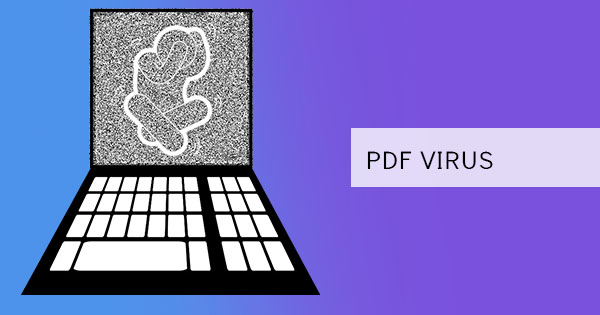
No matter the format, many phishers and hackers are still out there creating a virus that results in chaos. A PDF can still contain a virus, and it can be in different forms and codes – including malware hidden in hyperlinks, JavaScript codes, commands, and even media. A virus more likely comes from unknown and suspicious email senders, downloads, and web content. But a malware from a sent material can only attack a user’s computer when it is executed and this can only be done when the file is opened or clicked.

How to check for hidden malware
There are basically 4 types of common malware hidden in email and PDF documents. It can be in hyperlinks, multimedia, codes, and in JavaScript. The latter two elements are obvious since viruses are also codes but you’re probably wondering how can a link or multimedia contain such malware? Let us elaborate…
1. Hyperlinks
As we all know, documents such as PDFs can contain links and hyperlinks that allow us to jump from one page to another. It can help us navigate through resources and web pages in one click. It’s considered the norm to find these links within a PDF, but also, it is an avenue for attackers. Links can lead you to malicious sites, manipulate your computer, get information or even download several unwanted files. Anti-virus software can help you by scanning the links but to make sure that it doesn’t lead you to something else, you need to check it manually. You can simply do this by hovering over the hyperlink. An alt text will appear near it and if the text is the same as the link destination, then the sender is honest to its sources. However, take note that most hackers purchase credible-looking domain names so always do your research first on these sites before going over and clicking them.
Always remember to never trust a web address encoded on the content. It can always forward you to another website with viruses.

2. Multimedia
PDF can also contain images, videos, flash, audio, and multimedia. More likely, you can download, play and view this content but each element can also be corrupted and contain viruses. Once you download them, a virus can overtake your computer without your knowledge. Unless you have an anti-virus installed, your computer will be harmed. To check for viruses, each multimedia should be scanned by your anti-virus software.
3. Programming
Codes are part of programs and files that execute commands. A virus is simply a code that does the same – execute the command. When a PDF file is encoded with a virus, it will execute a command to infect your computer, modifying computer programs with its own code. Using unreliable readers to open your PDF can possibly make it easier for the command to breakthrough. That is why it is always recommended to use Adobe Acrobat Reader in opening and viewing PDF. With Adobe, your computer will be protected from such command-based viruses. Occasionally update your Adobe PDF reader as well to better guard your computer against malicious PDF. An updated reader means vulnerabilities of this tool are fixed, hence harder for a virus to break into. Don’t forget to update the reader from the application and not from ads.

4. JavaScript
What is JavaScript? Like HTML, JavaScript is a computer language for coding. With it, users can create graphics and interactive elements that focus on function and interface, helping readers navigate and see a website as user-friendly. JavaScript can be embedded in PDF to commence malware on a computer. To avoid any attacks, disable your JavaScript in your PDF reader and start scanning it with your anti-virus software. Disabling will only reduce the functions of the PDF but it will still contain the necessary text content. To turn off your JavaScript in Adobe Reader, follow these steps:
Step one: Open your Adobe Reader
Step two: Click EDIT and select PREFERENCES
Step three: On the new window, click JavaScript then untick the box for Enable Acrobat JavaScript
Step four: Click OK. The settings should be saved.
Avoiding Viruses – in Conclusion
Basically, it is still best not to open a PDF if the sender is suspicious or if you do not know where it came from. If you’re willing to risk it though, you can always use anti-virus software to scan the file first before opening it. Many software nowadays includes virus protection for web browsers and will automatically scan the pop-up windows, attachments, and downloads. Essentially, you also need to update your system regularly to avoid any virus mishap. By updating, you allow your computer to fix its vulnerable sides on its operating system.


